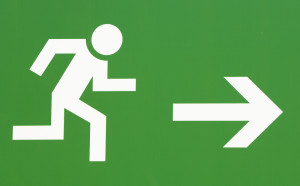
SEO monkeys like me often have to deal with clients who are puzzled about the differences between bounce rate and exit rate.
Confusion reigns.
Bounce Rate
According to its standard definition, the bounce rate is “the percentage of single-page sessions (i.e. sessions in which the person left your site from the entrance page without interacting with the page).”
This is a relevant metric but doesn’t give you the full picture of your performance.
In fact, “for all pageviews to the page,” you must also consider the exit rate, which “is the percentage that were the last (page) in the session,” according to Google Analytics. More broadly, the exit rate takes into account the “path journey”, also known as “funnel path” of the user, which:
- Must be accurately optimised
- Would tell you whether your website is friendly or not.
(Click here if you want to know more about funnel paths.)
You can control the funnel path, in which case you’d likely be able to push the user straight to the item you want to sell, or to the news you want him to read.
High Or Low?
A high bounce bate does not always indicate a bad performance.
Take a blog or a news platform, either of which may have high bounce rates in the event that after a Google search, the reader finds what it wants, reads it, and walks away. But if the platform in question is that of an e-commerce business, a high bounce rate could mean that the user had not managed to find what he was looking for.
A less direct reading of this metric suggests that it is also a gauge of how long you stay on a single page.
Remember that cookies, depending on the original set-up of the tracking code of Analytics, could alter your findings, and in some cases could even consider as new all the sessions that last more than 30 minutes — which, in turn, would push up your bounce rate.
SEO Tips
- Your website structure must be tested by SEO agents in order to secure “usability” — how easy your platform actually is for users.
- Remember that internal links should favour engagement and path journey, use them!
- SEO agents could help you determine whether Google Analytics’ tracking codes are correctly set up on each page. Otherwise, all the data associated to bounce rate and exit rate must be adjusted.
- Apply filters on Google Analytics to prevent fake visits (e.g. robots).
The first step, of course, is a SEO audit of your platform by your favourite SEO monkeys at Hedging Beta!
For a free or premium SEO audit please contact us at info@hedgingbeta.com.

Think it’s also important to differentiate between “forward bounces” (where the user clicks on an external link within the page being viewed) and “backward bounces” (where the user hits the “back” button) – though as far as I am aware Google Analytics does not seem make this kind of distinction..
Thanks for your comment Dr RWP. You can use Google Analytics Events to track “forward bounces”.
“Backward bounces” are not considered as “bounces” if the previous page is hosted on the same domain (it also depends on GA cookies bounce time set-up).